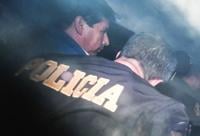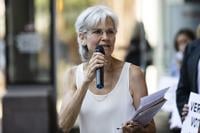LIMA, Peru (AP) — Here is a brief timeline of the political crisis that resulted in the ouster of a president and the imposition of a police state in Peru:
Wed., Dec. 14, 2022: Peru’s defense minister announces a 30-day national emergency imposing a police state amid violent protests against the ouster of President Pedro Castillo. A 7th person injured in demonstrations dies. Answering demands for immediate elections, the new president Dina Boluarte suggests holding them in December 2023, four months before her earlier proposal.
Tues., Dec. 13, 2022: A judge orders Castillo, 53, to remain in custody, denying his appeal as authorities build a rebellion case against the rural teachers union leader, whose presidential victory had been celebrated by Peru's poor and Indigenous population who feel their struggles have long been ignored.
Mon., Dec. 12, 2022: The governments of Mexico, Argentina, Colombia and Bolivia line up in Castillo’s favor.
Sat., Dec. 10, 2022: Boluarte, 60, the first woman to lead Peru, swears in 17 Cabinet members, making them all promise not to be corrupt.
Fri., Dec. 9, 2022: Protesters demand that Castillo be freed, Congress closed and Boluarte removed. She maintains that she should be allowed to finish the remaining 3 1/2 years of Castillo’s term.
Thurs., Dec. 8, 2022: The Biden administration condemns Castillo’s power grab as illegal and supports Boluarte’s call for a national unity government.
Wed., Dec. 7, 2022: The 17-month presidency of Castillo, 53, ends in a display of raw power. Castillo seeks to dissolve Congress ahead of its third attempt to impeach him; lawmakers then oust him in response and swear in his vice president to succeed him. Castillo is arrested on rebellion charges as Boluarte becomes Peru's sixth president in as many years.








































